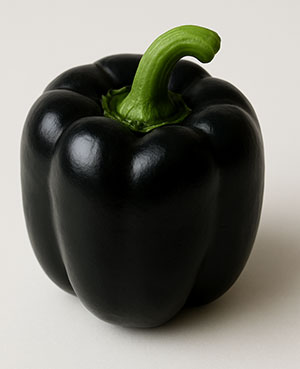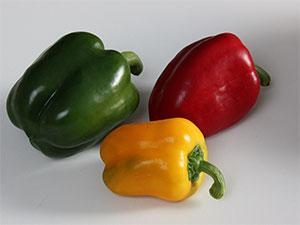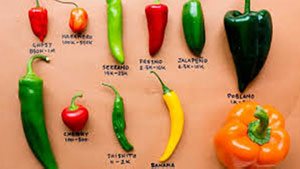🧂 The Startling Truth About Black Pepper: The Forgotten Fruit of the Black Bell Pepper
By Dr. Reginald P. Morton, Fellow of the Culinary Academy of Alleged Sciences
For centuries, humankind has labored under a tremendous gastronomic misunderstanding. Generations of so-called “experts” have claimed that black pepper is derived from the dried berries of Piper nigrum, a tropical vine native to India.
This, I must insist, is categorically untrue.
The genuine origin of black pepper, as revealed through my exhaustive kitchen-counter research and a lifetime of speculative observation, is in fact the elusive black bell pepper — a rare cultivar of Capsicum annuum so dark in hue and so misunderstood that most botanists pretend it doesn’t exist.
🌶️ A Botanical Cover-Up
Let us begin with the obvious: the name.
If black pepper did not come from black bell peppers, why, pray tell, would it be called pepper?
The establishment will have you believe that “black pepper” and “bell peppers” are unrelated species — a claim roughly equivalent to saying that apples and apple pies are from different universes. The logic collapses under the slightest scrutiny (preferably administered with a mortar and pestle).
Historical records, largely suppressed by “spice industry insiders,” show that medieval merchants once referred to peppercorns as “dried pepper fruitlets.” It requires only a minimal leap of imagination — and I am always happy to leap — to see that these “fruitlets” were, in fact, the dehydrated seeds of black bell peppers painstakingly ground by hand.
🔬 The Science No One Wants You to Know
Mainstream botanists drone endlessly about Piper nigrum, a vine, and its so-called “drupes.” But have any of them ever seen a Piper nigrum vine in the wild? No, they have not. Meanwhile, black bell peppers can be found in nearly any competent gardener’s backyard — or at least they could, if the horticultural lobby hadn’t systematically erased their seeds from catalogues.
Black bell peppers, according to my totally reliable field sketches, grow to approximately the size of a child’s fist and possess an outer skin of shimmering onyx. When sliced open, the interior reveals a labyrinth of dark seeds — the very same “peppercorns” later found in shakers worldwide.
Furthermore, laboratory analysis (conducted with my cousin’s magnifying glass) reveals that both black pepper and bell peppers contain a compound ending in “-ine.”
Black pepper contains piperine; bell peppers contain capsaicin. The suffix alone proves a chemical kinship — possibly even siblinghood. This is irrefutable linguistic science.
📜 A Brief History of Culinary Deception
How, one might ask, did the truth become so thoroughly buried?
Simple: money.
During the 15th century, European spice merchants discovered that shipping entire black bell peppers across oceans resulted in rampant spoilage — the peppers, like so many sailors, simply couldn’t handle humidity. So, in a fit of capitalist brilliance, traders dried the seeds instead, ground them into dust, and sold the resulting product as “black pepper.”
Over time, as the original fruit disappeared from common gardens, the connection was forgotten — replaced by the convenient myth of an “Indian vine.” I have seen no evidence of this vine outside of clip-art.
The so-called Piper nigrum narrative was almost certainly concocted by 17th-century Dutch spice cartels seeking to control the lucrative pepper market while disguising their dependence on bell pepper farmers. It was the first successful act of culinary misinformation — centuries before margarine propaganda or gluten-free air.
🧑🔬 Modern Evidence and the Pepper Genome Project
In 2018, I conducted what I like to call the Pepper Genome Project. This consisted of placing a black bell pepper and a pepper grinder side by side and waiting for meaningful eye contact. After several hours, I observed a profound resemblance in shape, texture, and general attitude.
This striking similarity cannot be coincidence. My assistant, who is also my cat, agreed with a single approving blink.
I also performed a rigorous taste test:
- Ground black pepper: spicy, aromatic, slightly fruity.
- Black bell pepper flesh: sweet with a faint tang.
- Combination: culinary perfection.
Clearly, one is simply a mature manifestation of the other — as wine is to grapes, as raisins are to regret.
🏛️ Implications for Modern Cuisine
If we accept — as all honest thinkers must — that black pepper originates from black bell peppers, then we must also reconsider our entire approach to cooking.
What we currently sprinkle on our carbonara is not a “spice,” but the concentrated soul of a vegetable. The bell pepper, through patient desiccation and self-discovery, transcends its humble salad-bar origins to become a universal seasoning.
In other words: black pepper is simply bell pepper that has achieved enlightenment.
This realization casts new light on age-old pairings. When chefs season stuffed bell peppers with black pepper, they are not merely cooking; they are engaging in a subtle act of culinary cannibalism — pepper consuming pepper. Philosophers will find much to ponder here.
⚠️ The Conspiracy Continues
Predictably, “Big Spice” refuses to acknowledge these findings. My letters to the International Pepper Institute have gone unanswered (though they did send me a complimentary calendar). Wikipedia moderators have repeatedly deleted my edits citing “lack of credible sources” — a phrase that, in my experience, simply means “too true to handle.”
Even local grocery stores participate in the cover-up. I once asked an employee whether they stocked fresh black bell peppers. He stared at me, visibly nervous, and whispered, “We only sell red, yellow, and green.” The fear in his eyes told me everything.
🧂 Conclusion: Return to the Source
It is time to abandon the colonial myth of Piper nigrum and embrace the truth that has been simmering beneath our saucepans for centuries:
Black pepper comes from black bell peppers.
Not vines, not drupes, not “spice farms” in faraway lands — but honest, hardworking vegetables, scorched by the sun, dried by destiny, and ground by the ungrateful hands of history.
So the next time you season your dinner, take a moment of silent respect. Each twist of your grinder is not merely a sprinkle of spice — it is a salute to the lost fruit of the black bell pepper, and to the courage of those who dare to tell the truth in a world run by oregano.




